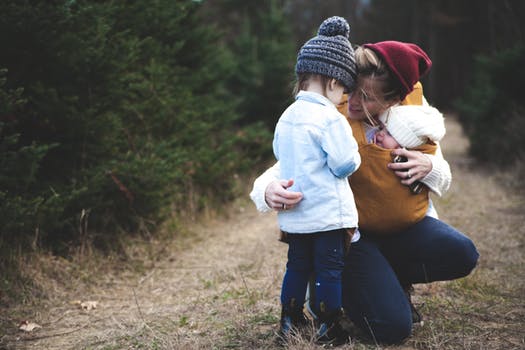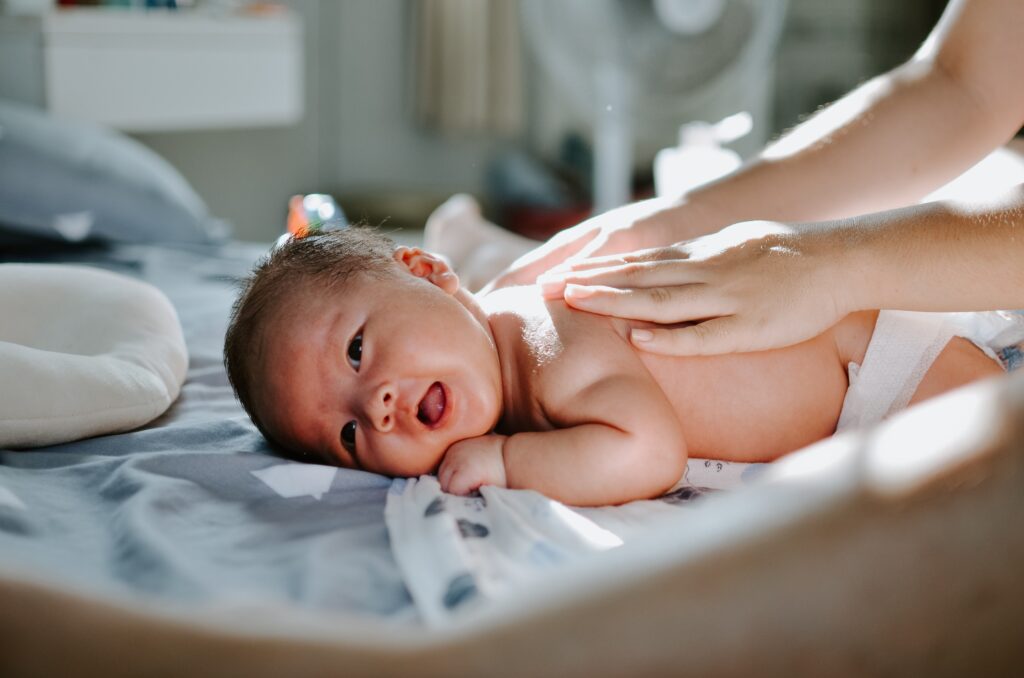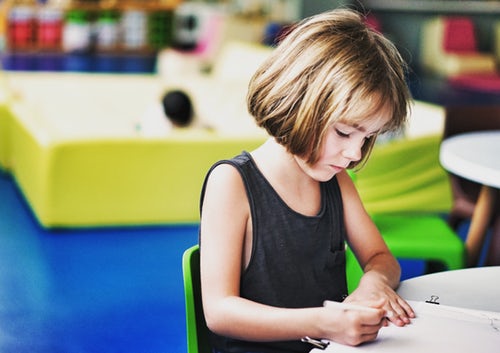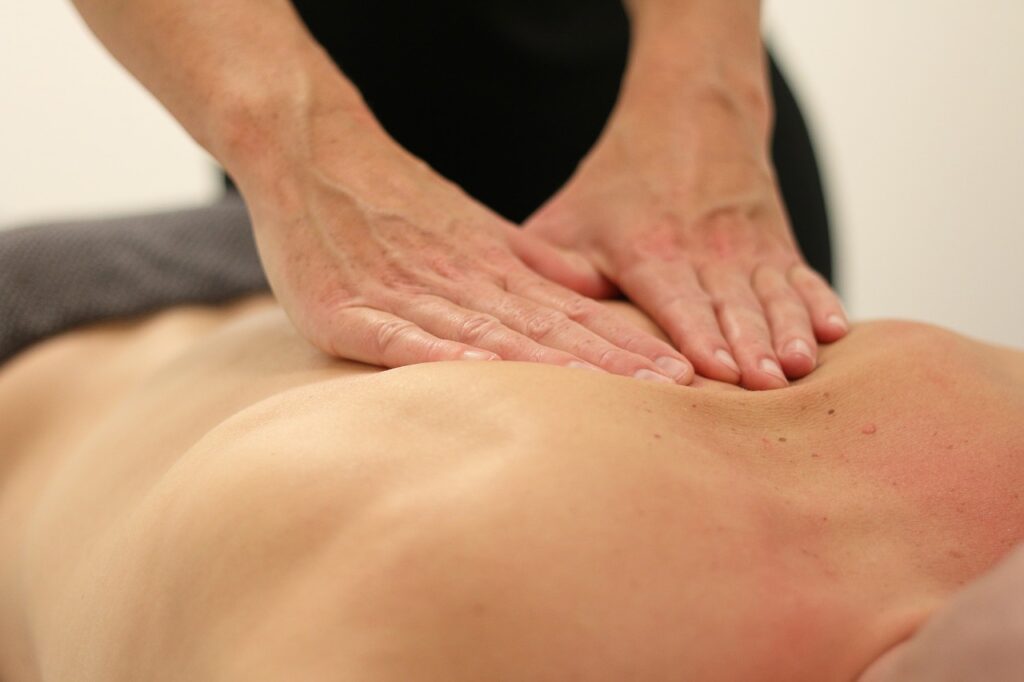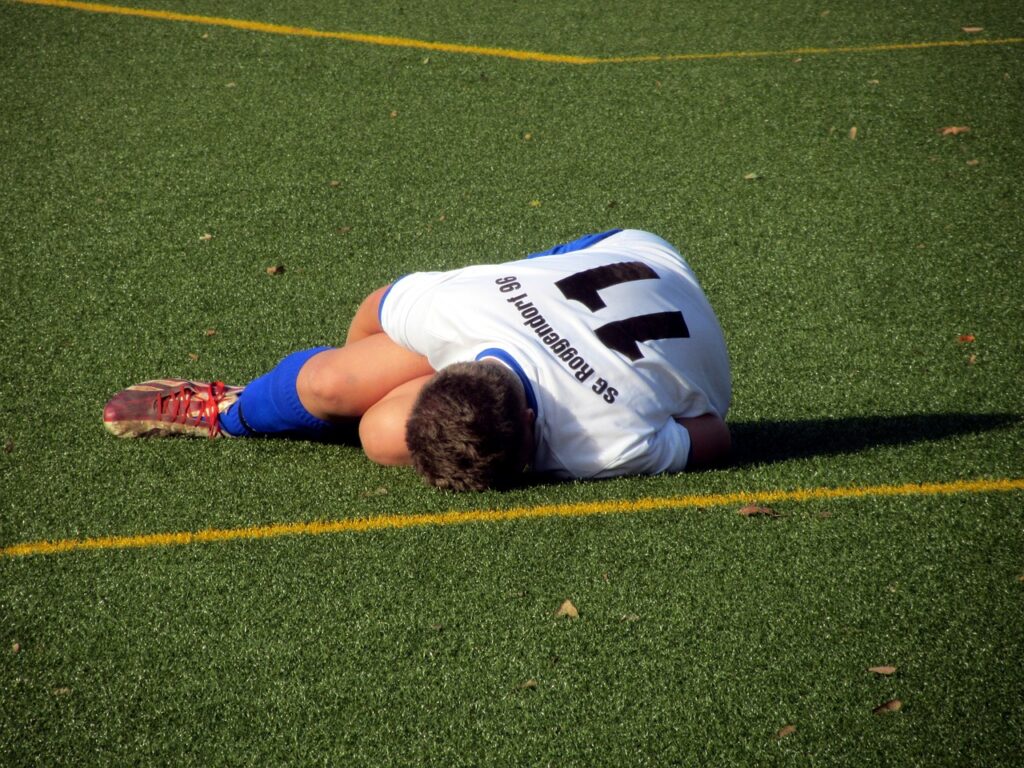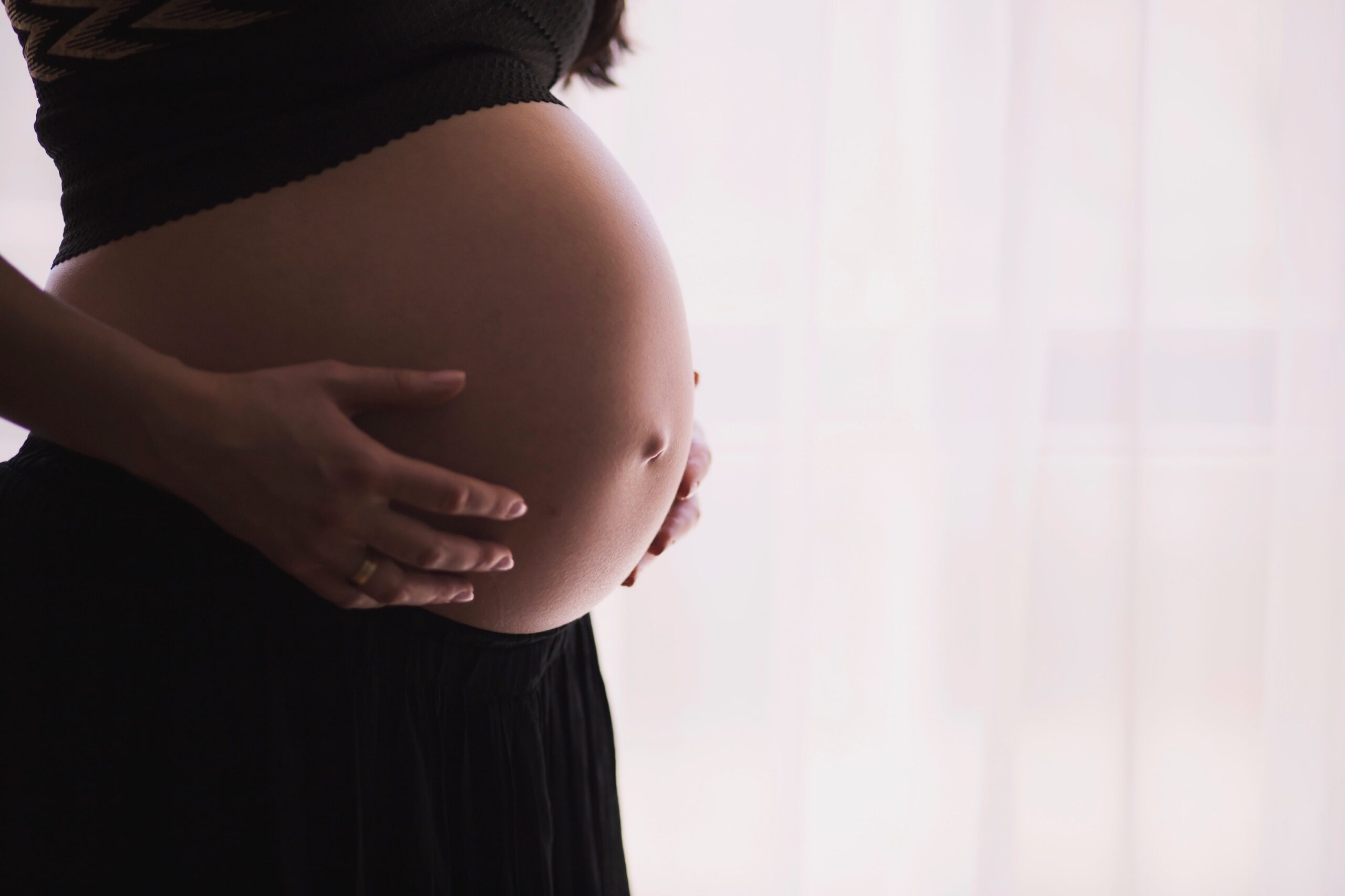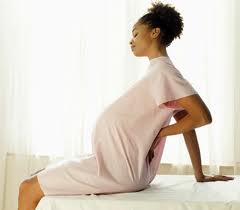Osteopathy Services
Structural Osteopathy
Osteopathy can be broken down into separate methods of treatment, however, most Osteopaths often use a combination of each to suit you and your problem best.
Structural Osteopathy is the most common Osteopathic treatment approach and is the foundation of our training. It involves Osteopaths skilfully applying manual techniques to affect the musculoskeletal system by moving joints, massaging soft tissues and stretching muscles. This treatment can have a positive affect both on therapeutic joint range of motion and muscle tone. In addition to balancing your musculoskeletal system, treatment can also enhance the blood and nerve supply to the body’s tissues to aid your own healing mechanisms.
A variety of techniques fall under the umbrella term of ‘structural’ osteopathy. Techniques such as joint mobilisation, muscle energy techniques, muscle relaxation techniques, soft tissue massage, ligamentous and fascial techniques could be used to ease your symptoms. Osteopaths may also perform joint manipulation or HVTs. This is what Osteopaths can sometimes be known for, the ‘clicking’ of joints and it can be very effective for certain people and injuries.
By using structural techniques, we aim to address acute or chronic pain symptoms, postural imbalances and aid injury rehabilitation.
Adults and children can benefit enormously from Osteopathic intervention. From identifying a cause of a problem, forming a diagnosis and onto treatment and management advice.
After a structural treatment it is common to feel sore the day after treatment – this may occur if the condition you came in with is acute or if it has been present for a while. Most simple problems should be greatly eased or fixed within an average range of 2-6 visits.
Cranial Osteopathy
Cranial Osteopathy is the most gentle of Osteopathic treatment and has been around for many years. It usually involves some treatment of the head but the word Cranial does not mean it is limited to this region as it also used to treat other parts of the body. It is a treatment which is suitable for many different types of problems in the body and is for all ages, from new-borns to the elderly.
Cranial Osteopathy is the subtle art of listening to the body’s rhythm and treating it through removal of strain patterns which are maintaining injury. These can be caused from birth or from past injuries that have healed incorrectly. Osteopaths are trained to feel and interpret the very small motions of the bones of the skull and other body areas. This ‘cranial rhythm’ or ‘involuntary motion’ goes throughout the body and repeats itself every 10 seconds or so. The treatment is hands-on and will involve very light touch. The therapist will not move much because they are listening to the patient’s body via their hands.
One of the main ideas is that Cranial Osteopathy is restoring fluid balance within the body, allowing improved fluid flow throughout the various body systems. The gentleness of this technique allows us to use it with patients who are suffering from chronic illness, as it works with the body encouraging it to change rather than forcing it.
Patients get remarkable benefits from Cranial Osteopathy when other treatments may have failed. It is often used to treat pregnant ladies, babies, children and patients who have had accidents or injuries and those who have headaches or back pain. It is also beneficial to patients suffering with stress as it improves vitality. It is excellent for people who dislike forceful manipulation and heavy massage. Instead it works more gently with your body to help you find a better balance to decrease your pain.
The treatment induces a state of deep relaxation. Patients may become aware of heat or other sensations like tingling as their body starts to reorganise itself. Your breathing may slow and often a deep breath coincides with the release of tension.
Patients often report an improvement in their general well-being, energy levels and sleep patterns following treatment.
Sports Injuries
Osteopathy works very well for sports injuries and we particularly enjoy the challenging ones which are not getting better with other forms of treatment. Osteopaths don’t just treat the symptoms, we look beyond the injured area to find out why the injury has occurred. Osteopath’s can help improve your performance as well as treat the injury you are suffering with.
Many athletes and fitness enthusiasts also find Osteopathic treatment advantageous for keeping them in shape. As such, Osteopathy is often used as a preventive measure in sport to help keep the body in optimum condition. By keeping on top of minor niggles during training or by improving your muscle tone and flexibility, Osteopathy helps minimise the risk of injury.
Some of the common sports injuries we see include: Ankle sprains, Shoulder and Rotator cuff injuries, pulled hamstrings, knee injuries, tennis elbow, Achilles tendonitis together with strained muscles and ligament injuries. Osteopathy treatment helps you regain muscle strength, joint flexibility, a full range of motion and structural balance in the injured area.
Injuries related to long distance running often include inflamed tendons, shin splints or aches and pains especially in the hamstrings and the back. Osteopathy can stretch and condition muscles as well as help ease pain. Not only do you need to recover from your injury, you also need to know that there will be no other lasting physical issues that might slow you down later.
A great example is a sprained ankle as it can often disrupt normal knee function, therefore without treatment it can lead to uneven wear with increased risk of injury to your knee or even your back. This is why we deal with all facets of the injury to ensure there are no ongoing affects.
It is not only professional athletes who require good care and attention. Whether you’ve just taken up a new sport or you’re participating in competitions, you may find that you suffer from aches and pains caused by overusing your joints and muscles. Osteopaths can tailor a treatment program to help ensure a full recovery where your lifestyle, line of work, hobbies and general health are all factors which help us shape a treatment plan specifically to you.
Osteopathy During Pregnancy
Osteopathy is a safe and effective way of dealing with common pregnancy symptoms enabling a pregnant mum to be at her mechanical optimum for when she gives birth. Pregnancy is a unique experience with enormous physical, chemical and emotional changes taking place over a relatively short period of time. The body has to adapt to carrying up to 9 kg of baby, fluid and placenta which can impose physical strain on all the organs and tissues. Treatment during pregnancy is a gentle way of aiding the mother’s body to adapt to the natural changes taking place. Osteopathy is suitable and safe throughout pregnancy and is often the treatment of choice for many mums to be.
General aches and pains are commonly encountered during pregnancy as the body adapts to accommodate the increasing size and weight of the uterus. Some of these changes include the softening of ligaments, weight increase and postural adaptation all of which can lead to additional pressure being placed on the joints in various parts of the body, including the spine and pelvis. Pregnancy can create new problems but may also exacerbate existing ones.
Osteopaths can help by:
Helping to correct mechanical disorders of the joints and muscles which can lead to joint and nerve stress. This reduces pain and improves function.
Maintaining joint function and spinal balance to help the spine adapt to the changes in posture and weight increase.
Assisting the joints of the pelvis and low back to move freely to aid the birth process. When the musculoskeletal system is functioning well it enhances the opening of the pelvis.
Advising on lifestyle such as optimal posture and lifting techniques to avoid spinal stress.
Providing exercise advice to assist spinal health.
Techniques we may use:
Many different and gentle treatment techniques can be used including soft-tissue massage, stretching, joint articulation and manipulation, muscle energy techniques and Cranial Osteopathic approaches.
Some of the common complaints we see:
As the centre of gravity changes so do the stresses on the body and spine. As a result we often see pregnant mums with neck and shoulder pain, upper and lower back pain, headaches, sciatica as well as pain in the ribs and pelvis such as Sacro Iliac joints. Pain in the lower abdomen or groin is often diagnosed as Symphysis Pubis Dysfunction (SPD) or Pelvic Girdle Dysfunction. This can make moving walking extremely painful. SPD is often misdiagnosed in pregnancy and the majority of patients with these symptoms respond very well to Osteopathic treatment.
In addition, postural changes through the lower ribs and spine can impede the action of the diaphragm and make breathing difficult. Osteopathic treatment can help improve the function of the rib cage which can in turn increase the use of the available lung capacity. Osteopaths are able to modify approaches to make Osteopathic treatment of the spine, ribs and pelvis comfortable for expectant mothers, providing a drug free alternative to pain management.
Preparation for labour:
An important part of preparation for childbirth is to ensure that the mother’s pelvis is structurally balanced in order to allow the passage of the baby down the birth canal. Trauma to the pelvic bones, coccyx or sacrum at any time in a mother’s life can cause increased tension and strain in the pelvis and it’s muscles and ligaments. This may limit the ability of these bones to separate during labour, reducing the size of the pelvic outlet.
Babies usually settle in a head downward position, facing backward with their spine curled in the same direction as the mother’s spine. This puts the baby in the most advantageous position for passing through the birth canal during labour. If the pelvis is correctly balanced this may also help to allow the baby to have an optimum position for childbirth.
Post pregnancy
Many women’s bodies do not easily return to normal which may result in pain. This can particularly be the case after a caesarean section which can further slow the natural recovery of posture. There is also the added strain on the neck, shoulders and spine whilst nursing, feeding, lifting, carrying and caring for the baby.
Osteopathy is there to get you back in shape quickly and help you with the stresses and strains of early motherhood. It is recommend that new mothers have their spine examined as soon as possible after the birth.
Advice for pregnant mothers:
When standing, tuck your pelvis under to reduce the arch in your low back in order to minimise the strain and also try to keep an even amount of weight on both legs. It can be useful to sit down when dressing to avoid standing on one leg.
When seated, sit to the back of the chair with your back straight, using a cushion for support and resist crossing your legs.
Take care lifting or carrying, especially other children. Try to limit carrying a small child on either hip for any length of time.
When laying, it is best to lie on your side, with a pillow under your bump and a pillow between your knees to provide support.
Keep your knees together when turning over in bed or getting in and out of the car.
Osteopathy For Babies And Children
Osteopathic treatment for babies and children is adapted to be more subtle and gentle than regular Osteopathy so we can help give your little ones the very best start in life. We are experienced in treating children of all ages from new-borns to adolescents for a wide range of issues.
Osteopaths often use a range of hands on very gentle techniques including stretching, massage, rhythmical joint and limb mobilisations and other techniques such as Cranial Osteopathy. This involves lightly applying our hands to your baby or toddler’s head, back, stomach or other areas of the body. A baby’s skeleton is softer than an adult’s so only very small amounts of pressure are applied to help create ease in the tissues. Osteopathy is not aimed at treating specific infant and childhood conditions but at assisting the body’s natural ability to release stresses and tensions to become more balanced, comfortable and settled.
Children must be accompanied by a parent or guardian and consent is gained prior to your child’s examination and treatment. You will be continually informed of any findings as well as what the treatment will involve. Osteopaths are trained to screen for medical conditions and can also tell you if you need to see another health professional such as a Paediatrician or other specialist.
Babies
Babies can go through a lot of stress and mechanical strains during pregnancy and the birthing process for many different reasons. Although birth is a natural process it can be traumatic and any stress during birth can create stress on your child’s system. For example a forceps or ventouse delivery may cause neck problems. As well as birth trauma, babies may also present with limb or joint movement problems and feeding or sleeping issues.
Osteopaths will ask questions about the medical history of both the mother and the baby in order to provide the best treatment and advice moving forward.
Your baby’s body is still developing and their bones, muscles and joints are delicate. Osteopathy provides a gentle approach to assessment and treatment which is why Osteopathy is recommended for helping with the challenges you and your baby may be facing.
Osteopathic treatment focuses on easing the stresses and strains, which in turn can help babies cope better structurally, physiologically and emotionally helping them to feel more contented and at ease.
Parents can hold, feed and talk to their baby during the session as it is important to keep the baby happy and relaxed. Please bring milk, snacks, dummy/pacifier or a favourite toy to entertain them as it is possible to treat a baby while they are being fed.
Children
Your child may also face health challenges as they grow and develop. Bumps, falls and minor injuries are all part of being a child. Osteopathy can be helpful in alleviating any aches and pains following these scrapes and tumbles.
As children get older they also start spending more time sitting, studying, using phones and Laptops and they become more exposed to stress and pressure. All of these things can have an effect on their muscles and joints especially as they are growing and changing rapidly too.
Osteopathic treatment can also be useful to help reduce the pain some children feel around their joints following a rapid growth spurt. Postural discomfort may be reduced with gentle stretching, massage and mobilisation to reduce any tension around the spine and other joints. Sporty children with minor injuries may be helped with a combination of manual treatment and advice on training and rehabilitation. Children will also usually have their overall posture checked during an Osteopathic consultation as well as the site of their pain or injuries.
Some adolescents can develop a spinal curvature or “scoliosis”. The majority of these are mild and in these cases gentle Osteopathic treatment together with an appropriate exercise regime are often enough to allow children to grow with and accommodate such conditions.
No one knows a child better than their parents. If you are concerned about your child or they have been complaining about pain, make an appointment or call if you have any questions.
